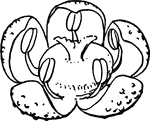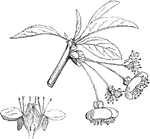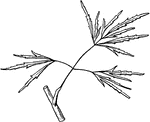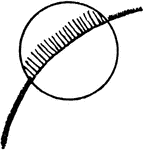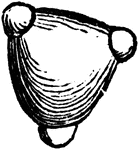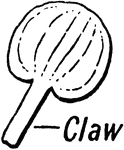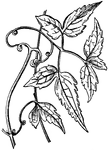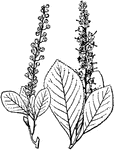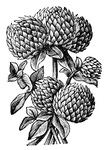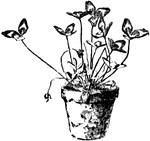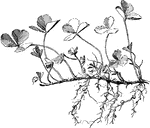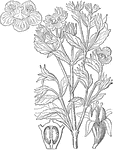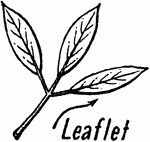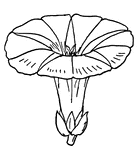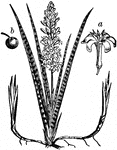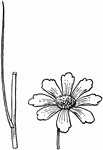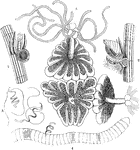
Chara fragilis
"1. Antherid and spore-case of Chara fragilis not much magnified; 2. the same at a later period, after…

Branch of Checker Barked Juniper
Also known as Juniperus pachyphlaea. Native to southwestern Texas, New Mexico, Arizona, and Mexico.

Branch of Cherrybark Oak
Also known as Quercus pagoda. The branch of a Cherrybark Oak tree, native to the southern United States.

Branch of Chestnut Oak
Also known as Quercus prinus. The branch of a Chestnut Oak tree, native to the eastern United States.
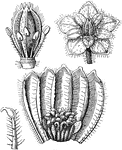
Mouse-Ear Chickweed
"Monstrous flower of a Cerastium; 2. the pistil and stamens separate; 3. the ovary forced open to show…
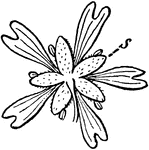
Nodding Chickweed
"c, flower of Cerastium longipedunculatum, seen from below: s, a sepal." -Whitney, 1911
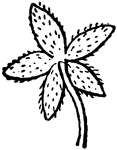
Nodding Chickweed
"d, calyx, showing the five free sepals" of the Nodding Chickweed (Cerastium nutans) -Whitney, 1911
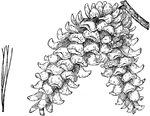
Pine Cone of a Chihuahua White Pine
Also known as Pinus strobiformis. A pine cone of the Chihuahua White Pine tree.
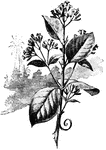
Cinchona
"Bolivia raises some of the best cinchona, although excellent cinchona is also raised in Peru and all…
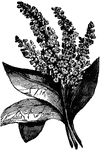
Cinnamon Tree
The cinnamon tree is a evergreen tree small in stature. The bark from the tree is used as a the spice,…
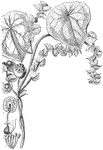
Cissampelos
"Cissampelos tropaeolifolia. 1. a female flower; 2. a portion of a fruit, with the seed laid bare; 3.…

Cistus
"Cistus Berthelotianus. 1. a vertical section of ovary and calyx; 2. a seed cut through; the pointed…
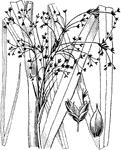
Cladium
Spikelets with the uppermost scale only enclosing an achene; our commonest species has saw-edged. cutting…
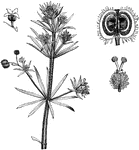
Cleavers
"Galium Aparine; 1. a flower; 2. a young fruit without the corolla; 3. a perpendicular section of a…

Cleft Grafting
Grafting is a horticultural operation which consists in placing together the two cut surfaces of different…

Flower of a Cleome
Flower of a Cleome of the section Gynandropsis, showing broadened receptacles to bear petals, lengthened…
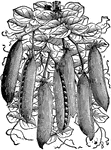
Rawson's Clipper
A species of peas that profusely covered with pods. The pods have one of the sweetest flavors of the…
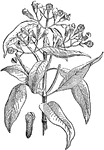
Clove Plant and Seed
Cloves (Syzygium aromaticum, syn. Eugenia aromaticum or Eugenia caryophyllata) are the aromatic dried…

Branch of Coast Live Oak
Also known as Quercus agrifolia. The branch of a Coast Live Oak, native to the California Floristic…

Branch of Coastal Sage Scrub Oak
Also known as Quercus dumosa. The branch of a Coastal Sage Scrub Oak tree, native to Mexico and California.
Coca
"Erythroxylon. 1. a flower; 2. one of the petals; 3. the pistil with 3 capitate stigmas; 4. a drupe;…
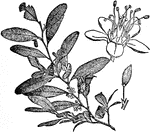
Coca Flower
Coca is a plant in the family Erythroxylaceae, native to north-western South America. The plant plays…

Branch of Cockspur Thorn
Also known as Crataegus crus-galli. The branch of a Cockspur Thorn shrub, native to eastern North America.

Codeso del Pico
"Adenocarpus frankenioides. 1. the standard, wings, and keel split open; 2. the stamens; 3. a cross…

Coffee
Coffee is the berry of a tree found native in Abyssinia. The tree attains a height of 15 to 20 feet,…
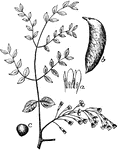
Kentucky Coffeetree
The Kentucky Coffeetree (Gymnocladus dioicus) is a tree in the Fabaceae family of legumes. It was also…

European Columbine
Aquilegia vulgaris is a perennial plant also known as the European columbine or Granny's Nightcap.
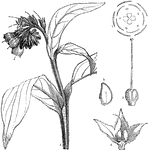
Comfrey
"Symphytum officinale; 2. a diagram of its flower; 3. its pistil; 4. the calyx opened, with two of the…

Branch of Common Juniper
Also known as Juniperus communis. It is generally found throughout the Northern Hemisphere.

Branch of Common Pawpaw
Also known as Asimina triloba. A branch of a Common Pawpaw tree, native throughout eastern North America.
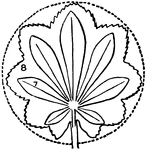
Compound Leaves Derived from the Circular Type
This illustration shows two types of compound leaves derived from the circular type: 7. palmately compound;…

Purple Coneflower
Also known as Rudbeckia purpurea and Echinacea purpurea. A flower with lavender drooping petals surrounding…

Coralberry
The Aechmea fulgens of coralberry is a bromeliad which is often used as a decorative plant.

Cordycep
The Sphaeria sinensis a cordycep, a parasitic fungus. "The right hand figure represents the manner in…

Cordycep
The Sphaeria Robertsii a cordycep, a parasitic fungus "growing from the caterpillar of a New Zealand…
